As we stand in the virtual line awaiting Game 6 tonight…
Some nostalgia to occupy you between innings or while new relief pitchers are coming in. My post on the 2020 World Series will arrive later this week.
Go Rays!
50 Years Ago – 1970 World Series: Two mini-dynasties faced off in this Series. The Baltimore Orioles won four AL pennants from 1966 to 1971. The Cincinnati Reds won four NL pennants from 1970 to 1976 and became known as the “Big Red Machine.” They were each led by a Hall of Fame manager: Sparky Anderson for the Reds and Earl Weaver for the Orioles. The O’s got a big favor from the Reds after the 1965 season – the Reds parted with (using their words) the “fading” Frank Robinson (an “old 30”) in a trade to acquire Baltimore’s Milt Pappas. Robinson responded by winning two MVP awards in 1966, one for the regular season and the other for leading the O’s to victory in the World Series.
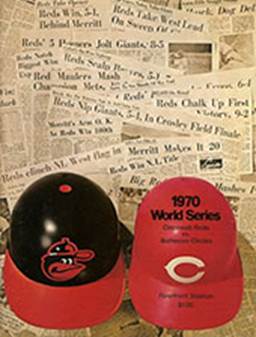
The 1970 World Series was the first for the Big Red Machine and featured Hall of Famers Johnny Bench and Tony Perez and non-HOF Pete Rose (Joe Morgan would not arrive until 1972). The Orioles had three Hall of Famers: Jim Palmer, Brooks Robinson and Frank Robinson. The Orioles had some extra incentive – they lost the Series the previous year to the underdog Amazin’ Mets.
Each team had won over 100 games in the regular season, but the Orioles dominated in the Series, winning four games to one. The MVP was Brooks Robinson who hit .429, breaking the record for total bases in a five-game Series (17). But it was Brooks’ trademark fielding that awed everyone – Total Baseball described it as “other-worldly defense at third which gave Reds right-handed hitters nightmares through the Series” (click here for a sample). Hearing Robinson won a new Toyota for being MVP, Reds’ catcher Johnny Bench quipped, “If we had known he wanted a car that badly, we’d have all chipped in and bought him one.” Below, Bench and Brooks.

The Jackson Five performed the “Star Spangled Banner” before Game 1. This was the first World Series played on artificial turf (the Reds new Riverfront Stadium). It was the last to be played with all games in the afternoon. It was the first World Series with a Black umpire – Emmett Ashford.
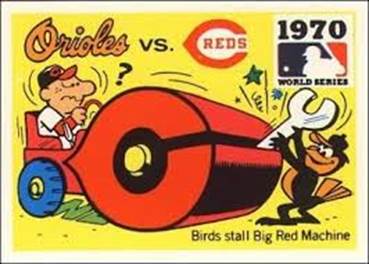
[Baseball Card Trivia: The above card is part of a 1971 set produced by Fleer. There was a card for each World Series going back to the first one in 1903.]
[Game Time Trivia: Each 1970 Series game was played in less than three hours (2:24; 2:26; 2:09; 2:26; and 2:35).]
100 Years Ago – 1920 World Series: This was the year after the 1919 World Series that had been thrown by the White (Black) Sox. The players involved in the scandal continued to play in 1920, and the White Sox were in a season-long close race with Cleveland and New York. With three games to go in the season, a grand jury indicted eight of the White Sox players for their acts in 1919. The eight were immediately suspended, and the depleted Sox went 1-2 to finish the season. That dropped them to second place, and Cleveland won the pennant.
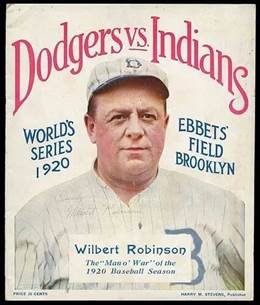
In the World Series, the Indians faced the Brooklyn Dodgers (a/k/a Robins after their popular manager Wilbert Robinson). It was the first World Series for both teams, and that would not happen again until 1980 when the Phillies and Royals made their inaugural appearances. A short clip of Game 2 has survived (click here).
The 1920 Series was a best-of-nine competition, a format used only four times (1903 and 1919-1921). The Indians beat the Dodgers 5 games to 2. Cleveland’s Elmer Smith hit the first grand slam in World Series history. In a singular achievement, Cleveland second basemen Bill Wambsganss turned the only unassisted triple play in Series history.
The hero of the Series was Cleveland pitcher Stan Coveleski who pitched three complete games, winning Games 1, 4 and 7. His key pitch was the spitball which had been banned at the beginning of the 1920 season. But 17 pitchers were grandfathered in and allowed to use the pitch until retirement. Coveleski was one of the 17, as was the Dodgers’ Burleigh Grimes who Coveleski beat in the final game.
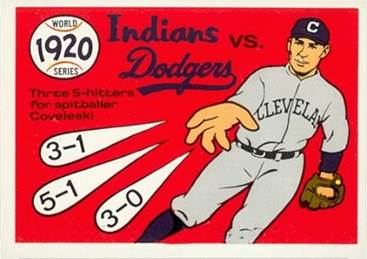
[Baseball Card Trivia: The above card is part of Fleer’s 1970 set on the World Series. The 1920 card featured “spitballer Coveleski.”]
[Game Time Trivia: Each 1920 Series game was played in less than two hours (1:41; 1:55; 1:47; 1:54: 1:49: 1:34; and 1:55).]
Lonnie’s Jukebox – 1920 and 1970 Editions: I don’t know much about songs from 1920, but did find a good link to the top 50 of that year. If you are so inclined, click here.
During the year the Orioles and Cincinnati played in the World Series, there was some pretty good music. For a glimpse of every Billboard #1 single that year, click here (1:33). I’ll pick five for longer play.
“I Want You Back” by the Jackson 5. The act had four #1 songs for Motown in 1970 and sang the “Star Spangled Banner” at Game 1 of the 1970 World Series. The link is to a good video of the young Michael Jackson.
“Bridge Over Troubled Water” by Simon and Garfunkel. Paul Simon compared the song to the Beatles’ “Let It Be,” saying “They are very similar songs, certainly in instrumentation.” Coincidentally, after six weeks at #1, “Bridge Over Troubled Water” was replaced at #1 by “Let It Be.”
“(They Long To Be) Close To You” by the Carpenters. Written by Burt Bacharach and Hal David. The link is to the song being played during a Simpsons episode.
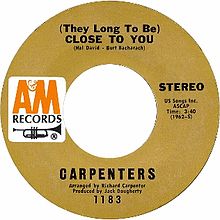
“War” by Edwin Starr. The song was written for Motown and initially recorded by the Temptations for an album. Another Motown artist, Edwin Starr, released a rougher soulful version as a single, and it became a counterculture hit. It was also in Simpsons episode, but only briefly (click here). The first lines of the song made an appearance in a Seinfeld episode. Elaine works at a publishing house, and she and her boss are to meet with a Russian author. Jerry convinces Elaine that the original title of Tolstoy’s “War and Peace” was “War, What is it Good For?”. When Elaine and her boss meet with the Russian author, she shares Jerry’s trivia about War and Peace. It does not go well (click here).
After “War” was #1 for three weeks, it was replaced by another hit from Motown…
“Ain’t No Mountain High Enough” by Diana Ross. Two Motown versions made the charts. The duo of Marvin Gaye and Tammy Terrell took it to #19 in 1967. Diana Ross took it to #1 in 1970.
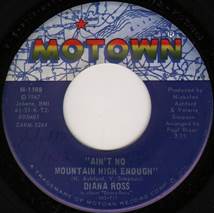
And a final word to the Tampa Bay Rays…Ain’t no mountain high enough…to keep you away from winning the World Series. Well, maybe Mookie.